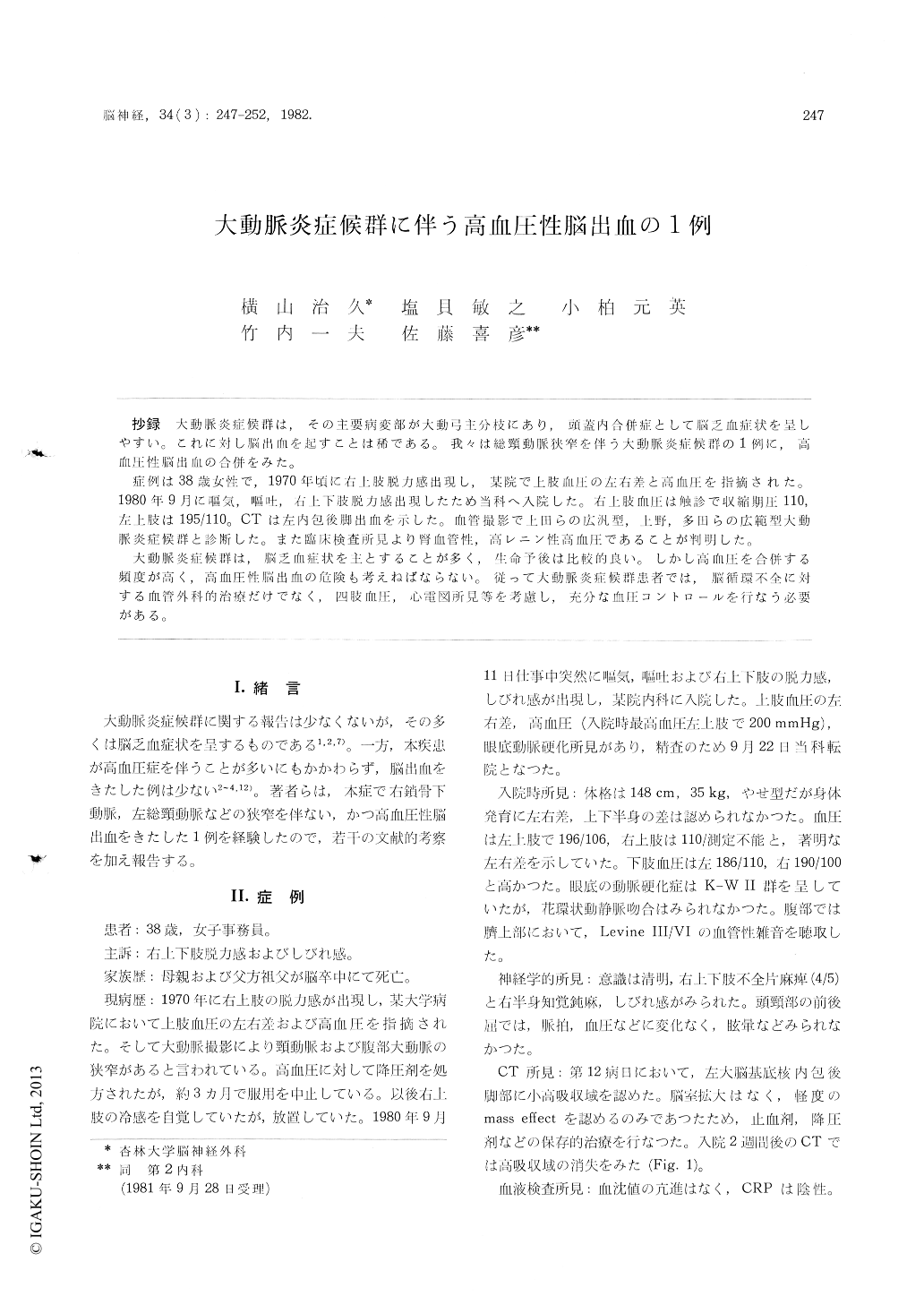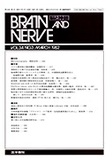Japanese
English
- 有料閲覧
- Abstract 文献概要
- 1ページ目 Look Inside
抄録 大動脈炎症候群は,その主要病変部が大動弓主分枝にあり,頭蓋内合併症として脳乏血症状を呈しやすい。これに対し脳出血を起すことは稀である。我々は総頸動脈狭窄を伴う人動脈炎症候群の1例に,高血圧性脳出血の合併をみた。
症例は38歳女性で,1970年頃に右上肢脱力感出現し,某院で上肢血圧の左右差と高血圧を指摘された。1980年9月に嘔気,嘔吐,右上下肢脱力感出現したため当科へ入院した。右上肢血圧は触診で収縮血圧110,左上肢は195/110。CTは左内包後脚出血を示した。血管撮影で上田らの広汎型,上野,多田らの広範型大動脈炎症候群と診断した。また臨床検査所見より腎血管性,高レニン性高血圧であることが判明した。
A case of aortitis syndrome associated with hypertensive intracranial hemorrhage is reported.
A 38-year-old female was admitted in 1980 suf-fering from hypertension and blood pressure difference between the left and right arms which had existed for 10 years. Two weeks prior to admission, she noticed weakness and numbness of the right arm and leg. She was orientated and alert at the time of admission. Her right upperand lower extremities could not function with full strength against resistance. Also, right hemihypes-thesia and hemiparesthesia were present. Left arm systolic blood pressure was 195 mmHg. Her pulse was palpable in both radial arteries. CT scans revealed a small high density area in the posterior crus of the internal capsule with a slight mass effect. There was no ventricular dilatation. She was given conservative treatment, such as with antihemorrhagic and antihypertensive drugs, and was discharged with good recovery after three months. Various studies were performed during her hospital stay. Based on angiographic findings, the most probable diagnosis was an extensive type of aortitis syndrome. Hypertension resulted from narrowing of the abdominal aorta and the right renal artery. Pulmonary scintiscanning using 99"'Tc-macroaggregated albumin revealed thather pulmonary arteries were also involved.
Aortitis syndorme is not infrequent, but intra-cranial hemorrhage following after aortitis syndro-me is rare. This may be because the carotid artery is involved in a high incidence of such cases, and therefore the intracranial blood flow is disturbed in most cases. Although the left common carotid artery was involved in the subject case, hyper-tensive intracranial hemorrhage occurred in the left posterior crus of the internal capsule.
In a case of aortitis syndrome, therapy resulting in recirculation to the carotid artery involved is generally carried out in order to improve poor intracranial blood flow. However, it is suggested that control of blood pressure is necessary to prevent intracranial hemorrhage in aortitis syndrome.

Copyright © 1982, Igaku-Shoin Ltd. All rights reserved.


